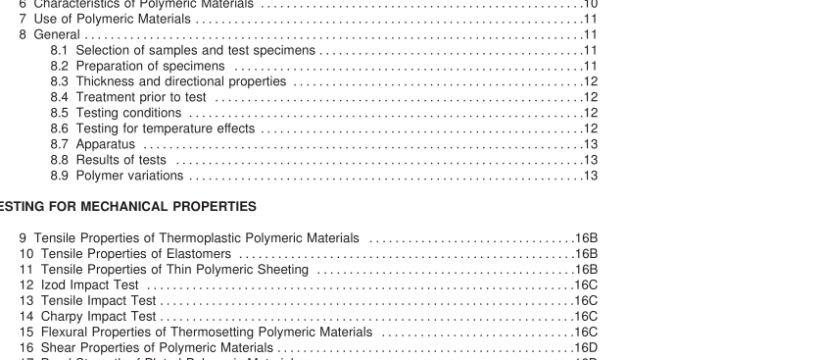UL 746A-2010 pdf download.Polymeric Materials – Short Term Property Evaluations.
1 Scope 1.1 These requirements cover short-term test procedures to be used for the evaluation of materials used for parts intended for specic applications in electrical end products. 1.2 Together with the requirements mentioned in Supplementary Test Procedures, Section 4, these investigations provide data with respect to the physical, electrical, ammability, thermal, and other properties of the materials under consideration and are intended to provide guidance for the material manufacturer, the molder, the end-product manufacturer, safety engineers, and other interested parties. 1.3 A product that contains features, characteristics, components, materials, or systems new or different from those covered by the requirements in this standard, and that involves a risk of re or of electric shock or injury to persons shall be evaluated using appropriate additional component and end-product requirements to maintain the level of safety as originally anticipated by the intent of this standard. A product whose features, characteristics, components, materials, or systems conict with specic requirements or provisions of this standard does not comply with this standard. Revision of requirements shall be proposed and adopted in conformance with the methods employed for development, revision, and implementation of this standard. 2 Units of Measurement 2.1 If a value for measurement as given in these requirements is followed by an equivalent value in other units, in parentheses, the second value may be only approximate. The rst stated value is the other requirement. 3 References 3.1 Any undated reference to a code or standard appearing in the requirements of this standard shall be interpreted as referring to the latest edition of that code or standard. 3.2 Appendix A contains a list of ASTM test procedures referenced in this standard.
7 Use of Polymeric Materials 7.1 The safety of electrical equipment depends upon the correct selection of materials, design, and processing of parts as well as the assembly, mounting, and relative positions of these parts. 7.2 The properties needed by individual parts are dened by the function or functions of the part. An enclosure, for example, must ordinarily be designed to withstand mechanical abuse. Accordingly, a material known to have substantial impact strength would normally be used although a material of lower impact strength that is reinforced may also be satisfactory. 7.3 Electrical equipment of necessity employs many materials that usually have divergent properties. The ability to match the demands of the application with the attributes of a material as well as the ability to compare the properties of one material with those of another can lead to the selection of an acceptable material. 7.4 The information gained from the data obtained from these tests can be used as an aid to the evaluation of electrical equipment using parts made of polymeric materials. Knowledge of materials can be obtained from an analysis of data from standard tests conducted on small specimens. 8 General 8.1 Selection of samples and test specimens 8.1.1 Samples shall be obtained if possible from the products to be tested, taken at random, and in such case shall be taken in accordance with the requirements for the particular material. Exception: When it is not practical to obtain test specimens from the nished article, the manufacturer shall furnish molded test specimens, or sample sheets as required in the individual test method. The number of specimens to be tested in each type of test shall be as specied in the individual test method; if not so specied, at least ve specimens shall be tested.
8.2 Preparation of specimens 8.2.1 When it is necessary to machine specimens, the work is to be done in accordance with the manufacturer’s recommended technique for the material involved. Tools are to be kept sharp and used so that the possibility of overheating is minimized. Machined surfaces of specimens are to be nished (No. 3/0 abrasive paper is acceptable) to eliminate all irregularities, such as tool marks, where such nishing results in a more perfect surface than can be obtained by machining alone. Where a more perfect nish is desired, a polishing compound is to be used. For mechanical test specimens, the direction of cutting and nishing is to be at right angles to the expected line of fracture whenever possible.UL 746A-2010 pdf download.
UL 746A-2010 pdf download
